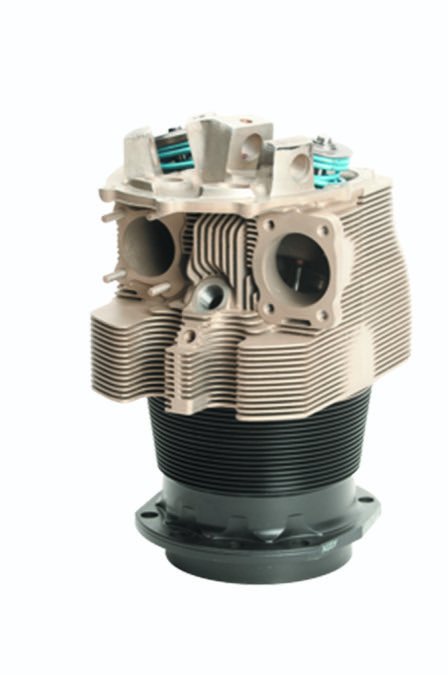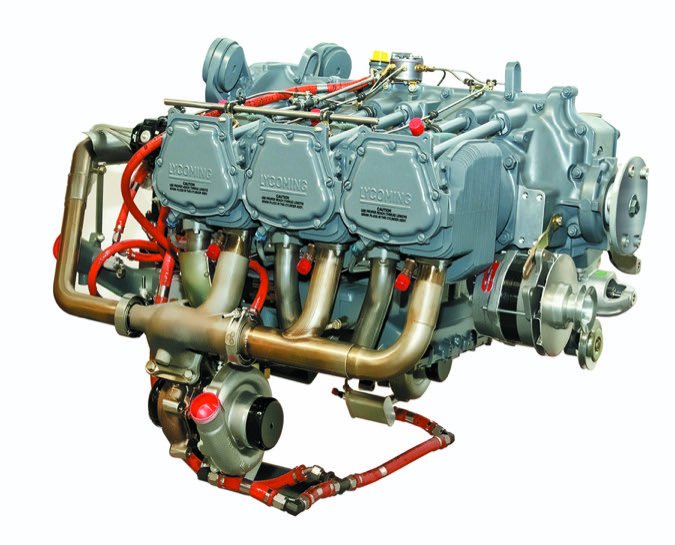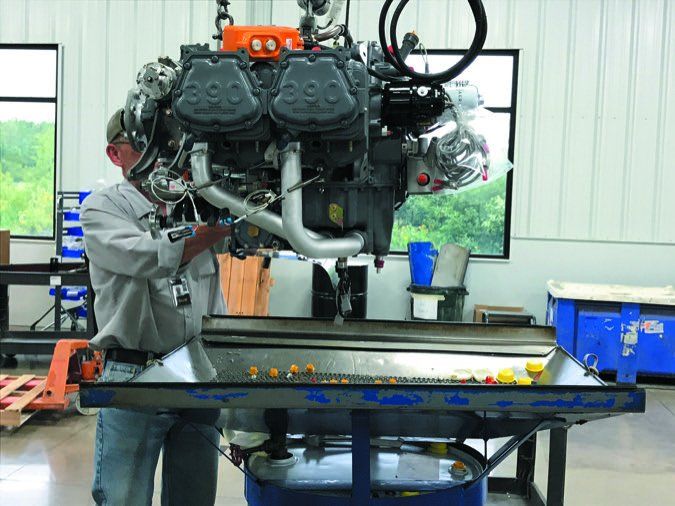There’s nothing quite like fetching your bird from the shop after a high-quality engine overhaul. Done right, it should perform like it did when the aircraft came off the factory floor. In the world of aircraft ownership, that’s a beautiful thing. But done wrong, you could be in for the time-consuming hassles of dealing with warranty work—or worse should the engine fail, despite it running great before handing it over to an overhaul shop. After all, engine overhauls are supposed to increase your confidence, not kill it or you in the process.
To find out how shops are doing when it comes to field overhauls, we ran an engine shop survey on sister publication AVweb, where nearly 400 respondents answered a variety of questions about their experience.
The good news: 60 percent said their experience with their overhaul shop was terrific and 24 percent said it was good. But there’s room for improvement. Customers and shops can learn a lot from sour experiences.
A Bit About The Results
As with all surveys we run, we’ll start with some caveats. We recognize that the sampling can be skewed because it might attract buyers who are disgruntled with a shop and can’t wait to tell the world about it, but we’re still interested to hear about the circumstances that sent the relationship off the rails. Similarly, the survey is an opportunity for happy customers to tell their story of bliss. That’s equally useful. In the end, what we’re really interested in is trends, and the survey does a good job of doing just that.
Additionally, some of the respondents reported having their engines overhauled several years ago (but roughly 50 percent had overhauls done within the last five years). In many ways that’s quite useful because we get to hear how the engine is holding up over time (especially with owners flying fewer hours per year) and how we’ll the shop has supported the work.
Moreover, we asked respondents to rate the shop’s customer service performance (from awful to terrific) on a five-point scale. As an example, the owner of a turbocharged Arrow who so far has flown off the overhaul for 400 hours told us the cam in his TSIO-360 showed signs of wear after 250 hours. The shop—Graham Aircraft Engines—did the right thing and made it whole, but he was disappointed that it took six months to complete the overhaul and another six months for the cam replacement. As with any large project, the survey results made it clear that downtime plays a significant part in customer satisfaction.
As you can see in the stats on page 5, not surprisingly the majority of respondents have Lycoming and Continental engines—split almost equally. While we’re most interested in the experiences with field overhauls (they ruled in the survey at 77 percent), 14 went with factory-remanufactured ones, 5 percent went with factory-overhauled engines and only 4 percent went with factory-new engines.
While we’ll concentrate on field overhauls for this report, it’s worth a brief lesson on factory engines. A factory reman isn’t an overhaul because you end up with a zero-time engine built by the manufacturer to new standards (the crankshaft and crankcase can be reused), plus it can carry a new maintenance log without noting any previous history. We found that the average price delta between a high-quality field overhaul and a factory reman is on the order of 30 percent, and slightly less with a so-called boutique engine from Ram and Victor, to name two.
Lycoming offers new, zero-time rebuilt and factory-overhauled options, while Continental has new and reman options. If you want to retain your original crankcase and crankshaft, a factory exchange isn’t for you.
Warranty Matters

We asked what kind of warranty the shop offered at the time of the overhaul and the answers were all over the board. Surprisingly, many didn’t know what the warranty was. In our view, this is one of the first questions you’ll want to ask before committing to any major work. For a field overhaul, one year and 200 hours is typical (some shops covered the engine for 500 hours) and that’s generous, in our view.
During the period since the overhaul, 74 percent said they didn’t have any warranty claims. And whether customers had any warranty claims or not, 84 percent said the overhaul/engine performed just as they expected it would. We think that’s a decent trend. For some who had to use warranty coverage, there were some standouts for terrific customer service.
“The overhauled Continental had valve problems at roughly 700 hours and four cylinders lost compression, so Powermaster in Tulsa, Oklahoma, did a top overhaul under warranty. A-plus-plus for Bill Cunningham at Powermaster for the support and for reworking the cylinders,” said Bob DeFilippo of the work on his IO-550. Powermaster reeled in plenty of favorable comments, including “They put high standards above making a profit.”
Since internal corrosion is a huge concern when it comes to engine longevity, we asked respondents if they encountered any and a whopping 91 percent said no. That was surprising, but refreshing. Are we treating our engines better while they sit for longer periods of time? We took it one step further and asked about preheating.
In the survey, 48 percent said they don’t preheat the engine at all, 40 percent said they turn on an engine preheater within a day or so of going flying and 12 percent leave the engine heat on all the time in cold temperatures. As far as we could tell, there was no smoking gun when it came to instances of corrosion, and some are unlucky despite best attempts at keeping it at bay.
Harry Moore told us the IO-360-A1A in his Mooney engine developed corrosion despite leaving the preheater on all the time in cold temperatures (he lives in a northern state). Triad Aviation in Burlington, North Carolina, used factory-new Lycoming cylinders during the overhaul and also replaced the camshaft. Still, Moore couldn’t be happier with the shop—a positive trend we noted for this shop in the survey.
Speaking of replacing major components, 36 percent of the overhauls included camshaft replacement, 19 percent included the crankshaft and 12 percent included the crankcase.
One respondent was unimpressed when he learned the shop overhauled the Lycoming engine in his Skyhawk, but in the process swapped his 2500-hour serviceable case with one that had upward of 9000 hours on it. He was offered no price discount or a good explanation, and told us he thinks the shop’s action decreased the value of his engine by half. He was pleased with the quality of the engine overhaul, but not so much with the quality of the installation and the deceptive switching of the case.
Lesson learned? Ask how many hours the replacement case will have, if it will be replaced.
Worth mentioning is that overhaul shops generally quote pricing based on a repairable or serviceable core. Crankcases and crankshafts do wear out, which means you could be in for some money when the engine hits the overhaul stand.
As we reported last spring, there’s some good news because Lycoming has drastically reduced the prices on new crankcases by as much as 60 percent. Of course, we wouldn’t exactly suggest shotgunning the case when it’s fully serviceable.
Instead, discuss its condition with the shop and make a decision while the engine is torn down.
What defines “serviceable” in the world of crankcases? Universally, it means the case meets the specs written in the official overhaul manual. Losing sleep over a cracked case? Believe it or not, you might not be out of luck. Continental Motors has a service bulletin that prescribes continued use with minor cracks, but only if the cracks are repaired or if the case is replaced, of course. For good reading, hit the FAA’s AC 33-6. It describes the repair process used for both cylinders and crankcases.
What Goes Wrong?
When asking respondents if their overhaul hasn’t performed as expected, cylinder troubles were high on the list of problems. As we found in other surveys, factory-new Lycoming cylinders were the most commonly used and generally yielded favorable comments. In a separate cylinder survey we ran a couple of years ago, Lycoming cylinders scored nearly 90 percent in customer satisfaction. We’ll refresh it with another survey and follow up.

But not surprisingly, cylinders in general cause fits for owners even after an otherwise high-quality engine overhaul. As one owner put it, “In hindsight, I should have gone with ECI-like coated cylinders because I simply don’t fly the airplane as much as I should. The Plane-Jane Continental cylinders barely made it to 400 hours”.
He’s referring to the nickel+carbide corrosion treatment process that ECI used before the company was bought by Continental Motors. Since then, Continental released its own NiC3 cylinders at a price premium (and extended warranty), which are nickel silicon carbide-coated (creating a hardened barrier inside the cylinder wall) and are available for all of the cylinders Continental produces.
This includes cylinders for a wide range of Continental engines, on the PMA cylinder line for Lycoming engines and also the Titan line of experimental and ASTM-certified engines, which Continental also acquired from ECI.
But cylinder woes aside, we also heard some horror stories of engine installations gone wrong, reiterating the importance of working with a shop you can communicate with. This includes the one that’s doing the installation work.
“Penn Yan Aero Services in New York was great and had the engine overhauled within three months, but the shop doing the install was horrific,” said a reader about the IO-540 overhaul process on his Comanche. According to him, the shop took nearly two years to complete the work and the engine was out of warranty before it was even hung on the airplane. He eventually got another mechanic to inspect the installation and got a ferry permit to fly the airplane out.
Luckily there weren’t many instances of owner/shop relationships that went that far off the rails. If you’re unfamiliar with the shop doing the installation work, ask for references and get a quote in writing. Consider your physical location to the shop and whether or not it’s practical to visit it during the work.
As for price quotes, we know from experience that some overhauls won’t include the cost of hoses and other accessory replacement. In the survey, 33 percent of the overhauls didn’t include them in the original price quote. Only 14 percent of the respondents didn’t replace the hoses at all, but most didn’t specify the age of the existing ones. In our view, if you’re going to invest the time and money in a quality overall, it pays to address the hoses while the engine is off.
The same goes for engine mounts. Bottom line, good shops offer professional guidance. Ask them about the condition of these accessories and get a total price for the job (parts and labor) with and without replacing them.
Stable Costs, But Look Out For Parts Penalties
On the data page in each Aviation Consumer Used Aircraft Guide, we print the average engine overhaul cost, including installation, as published by Aircraft Bluebook. In our survey, owners reported real-world costs that are in line with the guide. One respondent reported paying $104,000 total to overhaul both of the Lycoming TIO-541-EIC4 engines on a Beech B60 Duke. Both engines got factory-new Lycoming cylinders and the work was done by Epps Aviation in Atlanta, Georgia, a shop known for its high-quality work.
We checked that against Aircraft Bluebook, which says an average overhaul is $55,000 per engine. Each TIO-541 in a 1978 B60 Duke has a 1600-hour TBO.
Reader Dan Brennan offered useful dollars-and-cents feedback after Corona Aircraft Engines in Corona, California, overhauled the Continental IO-550B in his A36 Bonanza in 2017. His invoice totaled $33,262.74, which included new Superior cylinders. Procraft Aviation, also in Corona, did the installation. Aircraft Bluebook says the average price is $30,000. Brennan gave perfect scores and said he wouldn’t go anywhere else.
If you think a Cessna 150 is your ticket to affordable flying, it might at least be palatable should you have to overhaul its Continental O-200A. We got a report from one owner who paid $18,000 for his, which included factory-new cylinders and also the replacement of the crankshaft.
We were pleased to see that in general, field overhaul prices have remained constant over the past five years thanks to a competitive market. Still, work to accessories that aren’t part of the overhaul can quickly add to the bottom line, and shops tell us the prices of components are steadily on the rise.
Last, beware of and understand the price penalty for rejected parts (in writing) before the engine gets pulled from the aircraft. You might have little negotiating power once the engine is torn down for the overhaul.
“On Budget and It Runs Great”
There were a handful of shops that earned consistent comments like that. Not surprisingly, they also scored high marks for warranty performance and customer service. The ones that came up the most often in our survey are in the chart to the right. But there are other small, specialty shops that also deserve recognition, including Don’s Dream Machines in Griffin, Georgia, and Powermaster Aircraft Engines in Tulsa, Oklahoma.
Everyone understands you can’t keep every customer happy every time, and even high-ranked shops got dinged in the survey. As with avionics retrofits, it’s unrealistic to expect every job to be problem-free and they aren’t. But the shops that end up on top are the ones that know how to keep relationships on the rails. Not surprisingly, we’ve seen these names in other surveys. Expectations are high for delivering an on-budget, reliable and fully supported overhaul. That’s not too much to ask, given the high-dollar investment for a real overhaul. But shops also rely on the customer to operate the engine properly and as important, to pay the bill. The profit margin, factoring warranty support and liability, isn’t high.
Shops tell us improper preheating, improper leaning and infrequent operation are almost a sure way to early failures and a warranty hit. But they do like the customers who use engine monitors and trend engine data. That’s a plus for the customer, too, to help support a warranty claim.
To gauge the quality of overhaul, warranty performance, customer service response and overall performance, respondents rated shops on a five-point scale—awful, not good, acceptable, good and terrific (five points is terrific). As we’ve found in previous service surveys, shops that consistently get the highest marks are the ones that don’t make a habit of surprising customers with cost overruns, deliver the work to the agreed-upon schedule (and if they slip, explain why) and, most important, respond to questions and status inquiries in a reasonable amount of time.
The same rules apply to the shop that’s doing the engine removal and reinstallation work. Sometimes it’s done in-house at the overhauler or at the customer’s preferred maintenance shop and some owners do it themselves to save money. Wherever its done, don’t underestimate the effort to swap and properly set up an engine; turbos are more involved. Trust that the installing shop will properly coordinate with the overhauler (we’ve heard stories of everyday flyers turned hangar queens because the shop didn’t coordinate with the overhauler). You’ll pay for the shop’s effort, plus the cost of freight if the engine has to get shipped.
If you’re focused on one of many capable but less popular shops that didn’t make the chart above, drop us a line and we’ll tell you if and how other owners rated the performance.
Shop | Location | Satisfaction | Warranty Rating | Contact |
Zephyr Aircraft Engines | Zephyrhills, FL | 4.8 | 5.0 | 800-204-0735 |
Penn Yan Aero | Penn Yan, NY | 4.1 | 3.8 | 800-727-7230 |
RAM Aircraft | Waco, TX | 4.2 | 5.0 | 254-752-8231 |
Western Skyways | Montrose, CO | 3.8 | 3.2 | 800-575-9929 |
Triad Aviation | Burlington, NC | 4.2 | 4.0 | 336-227-1467 |





